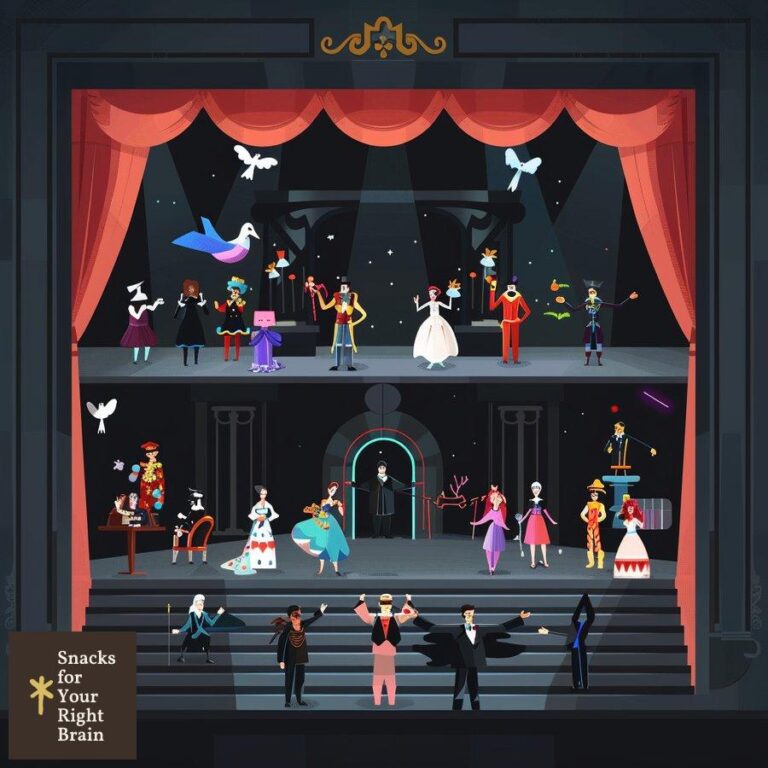What Is an Example of a Character-Driven Story
What defines a character-driven story?
A character-driven story centers around the development and transformation of its characters rather than focusing solely on external events or plot twists. In these narratives, characters are the primary agents of change, and their decisions, emotions, and relationships drive the story forward. The essence of a character-driven narrative lies in the following aspects:
-
Character Development: The characters undergo significant growth or change throughout the story. Their internal struggles, motivations, and desires are explored in depth.

-
Emotional Engagement: Readers are invited to connect with characters on an emotional level. This connection fosters empathy and investment in the characters’ journeys.
-
Theme Exploration: Character-driven stories often delve into complex themes such as identity, morality, and human relationships, using characters’ experiences to illuminate these ideas.
Character-driven narratives can manifest in various genres, including literary fiction, romance, and even some speculative fiction. The focus remains on the characters’ inner lives, making their choices and relationships the heart of the story.
How does “To Kill a Mockingbird” exemplify a character-driven narrative?
Harper Lee’s To Kill a Mockingbird serves as a quintessential example of a character-driven story. The narrative revolves around the experiences of Scout Finch, a young girl growing up in the racially charged environment of 1930s Alabama. The following elements illustrate how this novel exemplifies character-driven storytelling:
-
Scout’s Growth: The story chronicles Scout’s journey from innocence to a more nuanced understanding of morality and human complexity. Her observations and interactions with various characters, including her father, Atticus Finch, and Boo Radley, shape her worldview.
-
Moral Complexity: Atticus Finch embodies integrity and empathy, serving as a moral compass for Scout. His defense of Tom Robinson, a Black man unjustly accused of raping a white woman, highlights the themes of justice and racial prejudice, further enriching Scout’s character development.
-
Community Dynamics: The interactions within Maycomb, the Finch family’s hometown, reveal the complexities of human behavior and societal norms. Characters like Mrs. Dubose and Tom Robinson illustrate the spectrum of human experience, reinforcing the narrative’s character-driven nature.
The emotional depth and moral lessons embedded in Scout’s experiences resonate with readers, making To Kill a Mockingbird a powerful example of character-driven storytelling.
What are the elements of character development in fiction?
Character development is essential for creating compelling narratives that resonate with readers. Several fundamental components contribute to effective character development:

-
Backstory: A character’s history shapes their motivations and behaviors. Understanding a character’s past provides context for their actions and decisions.
-
Motivation: Clear motivations drive characters’ actions. Whether seeking love, revenge, or redemption, a character’s desires propel the narrative forward.
-
Conflict: Internal and external conflicts challenge characters, forcing them to confront their fears, beliefs, and relationships. These struggles are crucial for character growth.
-
Change: Characters should evolve throughout the story. This transformation can be positive or negative, reflecting the complexities of human experience.
-
Relationships: Interactions with other characters reveal different facets of a character’s personality. Relationships can serve as catalysts for change or sources of conflict.
-
Voice: A character’s unique voice and perspective contribute to their individuality. Dialogue, thoughts, and actions should align with their personality and experiences.
Developing these elements thoughtfully allows writers to create multidimensional characters that resonate with readers and drive the narrative.
How do character-driven stories differ from plot-driven ones?
Character-driven and plot-driven stories represent two distinct approaches to storytelling, each with its own focus and structure. Understanding the differences between these two styles can enhance a writer’s ability to craft engaging narratives.

| Aspect | Character-Driven Stories | Plot-Driven Stories |
|---|---|---|
| Focus | Character development and emotional arcs | External events and action sequences |
| Structure | Often nonlinear, exploring characters’ inner lives | Typically follows a clear, linear progression |
| Conflict | Internal conflicts and character relationships | External conflicts and high-stakes situations |
| Themes | Explores complex themes through character experiences | Themes often arise from plot events |
| Reader Engagement | Emotional connection with characters | Suspense and excitement from plot twists |
Character-driven stories invite readers to invest emotionally in the characters’ journeys, while plot-driven stories prioritize thrilling events and resolutions. Both approaches can coexist, but understanding their differences allows writers to choose the best method for their narrative goals.
Which techniques enhance character depth and complexity?
To create rich, multidimensional characters, writers can employ various techniques that enhance depth and complexity. These techniques help readers connect with characters and understand their motivations and struggles.
-
Show, Don’t Tell: Instead of explicitly stating a character’s traits, writers can reveal them through actions, dialogue, and choices. This technique allows readers to infer character qualities organically.
-
Internal Monologue: Providing insight into a character’s thoughts and feelings can deepen understanding. Internal monologues reveal motivations, fears, and desires, allowing readers to empathize with characters.
-
Symbolism: Objects, settings, or recurring motifs can symbolize aspects of a character’s personality or journey. This technique adds layers of meaning and invites readers to engage more deeply with the narrative.
-
Complex Relationships: Developing intricate relationships between characters can reveal their complexities. Conflicts, alliances, and emotional bonds can showcase different facets of a character’s personality.
-
Flaws and Vulnerabilities: Characters should possess flaws and vulnerabilities that make them relatable. Imperfections create opportunities for growth and transformation, enhancing character depth.
-
Dynamic Arcs: Characters should experience significant change throughout the story. Dynamic arcs illustrate growth, resilience, and the impact of experiences on character development.
By incorporating these techniques, writers can create characters that resonate with readers and elevate the overall narrative.
Why do readers connect emotionally with character-driven stories?
Emotional connection is a hallmark of character-driven stories, and several factors contribute to this phenomenon. Readers are drawn to narratives that evoke empathy and resonate with their own experiences.
-
Relatable Experiences: Characters often face challenges and dilemmas that mirror real-life situations. Readers can identify with these struggles, fostering a sense of connection.
-
Empathy and Understanding: Well-developed characters elicit empathy through their vulnerabilities and growth. Readers are more likely to invest emotionally when they understand a character’s motivations and fears.
-
Moral Complexity: Character-driven stories often explore moral dilemmas and ethical questions. This complexity invites readers to engage in critical thinking and reflection, deepening their emotional investment.
-
Emotional Resonance: The emotional arcs of characters can evoke strong feelings in readers. Joy, sorrow, anger, and love experienced by characters resonate with readers, creating a powerful connection.
-
Intimate Narratives: Character-driven stories often employ intimate narratives that focus on personal experiences. This closeness allows readers to feel as though they are part of the characters’ journeys.
Through these elements, character-driven stories cultivate emotional connections that enrich the reading experience and leave a lasting impact.
How do internal conflicts shape character-driven narratives?
Internal conflicts play a pivotal role in character-driven narratives, serving as catalysts for character growth and transformation. These conflicts arise from the characters’ struggles with their beliefs, desires, and emotions, influencing their decisions and relationships.
-
Motivations and Desires: Internal conflicts often stem from competing motivations. For instance, a character may grapple with the desire for personal success while feeling a sense of obligation to family. This tension creates a rich narrative landscape.
-
Moral Dilemmas: Characters frequently face moral dilemmas that challenge their values and beliefs. These conflicts force characters to confront their principles, leading to profound personal growth or tragic consequences.
-
Fear and Insecurity: Internal struggles often manifest as fears or insecurities. A character’s battle with self-doubt or past trauma can shape their actions and relationships, adding depth to their journey.
-
Character Relationships: Internal conflicts can impact a character’s relationships with others. Struggles with trust, loyalty, or love can create tension and complexity in interactions, driving the narrative forward.
-
Resolution and Growth: The resolution of internal conflicts often marks a turning point in a character’s development. Characters may emerge stronger, more self-aware, or transformed by their experiences.
By exploring internal conflicts, writers can create nuanced characters whose journeys resonate with readers on a profound level.
What role does dialogue play in revealing character?
Dialogue serves as a powerful tool for revealing character traits, motivations, and relationships in character-driven stories. Through conversations, writers can convey a wealth of information about characters and their dynamics.
-
Character Voice: Each character should have a distinct voice that reflects their personality, background, and experiences. Unique speech patterns, vocabulary, and tone contribute to character individuality.
-
Subtext: Dialogue often contains subtext—what is unsaid or implied. Characters may express their true feelings indirectly, revealing deeper emotions and tensions beneath the surface.
-
Conflict and Tension: Conversations can create conflict and tension between characters. Disagreements, misunderstandings, or emotional confrontations can highlight character differences and drive the narrative forward.
-
Relationships: Dialogue reveals the nature of relationships between characters. The way characters speak to each other—whether with affection, hostility, or indifference—provides insight into their connections.
-
Character Development: Through dialogue, characters can articulate their thoughts and feelings, showcasing their growth. Changes in how characters communicate can signal their evolution throughout the story.
Effective dialogue enhances character development, enriches relationships, and propels the narrative, making it an essential element of character-driven storytelling.
How can writers balance character focus with narrative momentum?
Balancing character focus with narrative momentum is crucial for maintaining reader engagement in character-driven stories. Writers must ensure that character development does not come at the expense of plot progression.
-
Integrate Character Arcs with Plot Events: Character growth should be intertwined with significant plot events. As characters face challenges, their responses should reflect their development, creating a cohesive narrative.
-
Pacing: Varying the pacing of the narrative can maintain momentum. Slower, introspective moments can be balanced with faster-paced scenes that propel the plot forward, keeping readers engaged.
-
Conflict: Introducing external conflicts can enhance narrative momentum while allowing for character exploration. Characters can confront challenges that reveal their traits and drive the story forward.
-
Character Goals: Establish clear goals for characters that align with the plot. As characters pursue their objectives, their journeys can create tension and excitement, maintaining narrative momentum.
-
Foreshadowing: Use foreshadowing to hint at future events while developing character arcs. This technique builds anticipation and keeps readers invested in both character and plot.
By employing these strategies, writers can create character-driven narratives that maintain a dynamic balance between character focus and narrative momentum, ensuring an engaging reading experience.
Which other novels are renowned for their character-driven approach?
Several novels are celebrated for their character-driven storytelling, showcasing the depth and complexity of their characters. Here are notable examples:
-
Pride and Prejudice by Jane Austen: This classic novel explores the intricacies of social class, love, and personal growth through the lens of Elizabeth Bennet and her evolving relationship with Mr. Darcy.
-
The Great Gatsby by F. Scott Fitzgerald: Fitzgerald’s exploration of Jay Gatsby’s obsessive love for Daisy Buchanan delves into themes of ambition, identity, and the American Dream, revealing the characters’ complexities.
-
The Catcher in the Rye by J.D. Salinger: Holden Caulfield’s internal struggles and alienation resonate with readers, making this novel a poignant exploration of adolescence and identity.
-
Beloved by Toni Morrison: This powerful narrative examines the haunting legacy of slavery through the experiences of Sethe, a former enslaved woman, and her complex relationships with her past and family.
-
The Road by Cormac McCarthy: This post-apocalyptic tale focuses on the bond between a father and son as they navigate a desolate world, exploring themes of love, survival, and morality.
These novels exemplify character-driven storytelling, inviting readers to engage deeply with the characters’ journeys and emotional landscapes.






